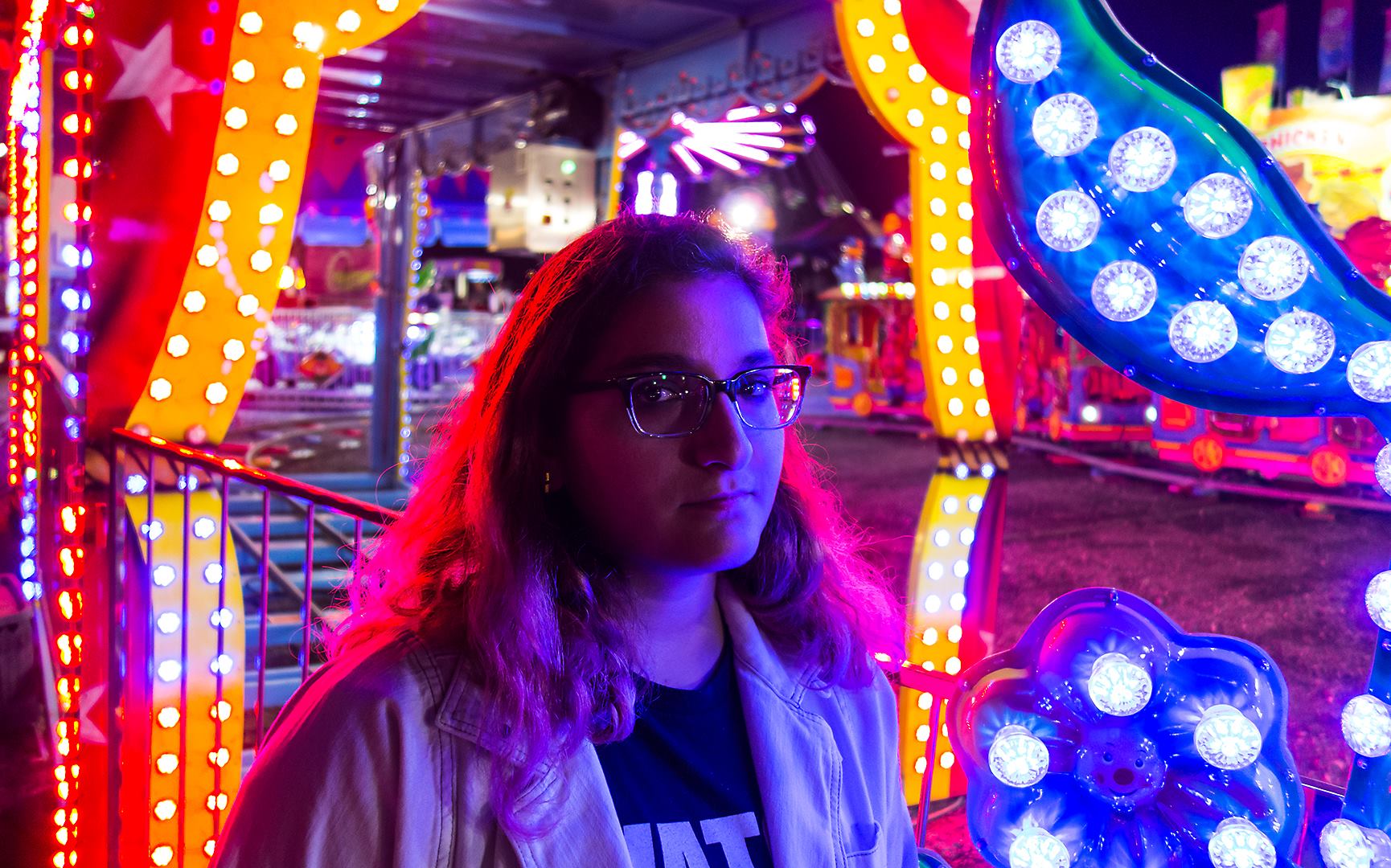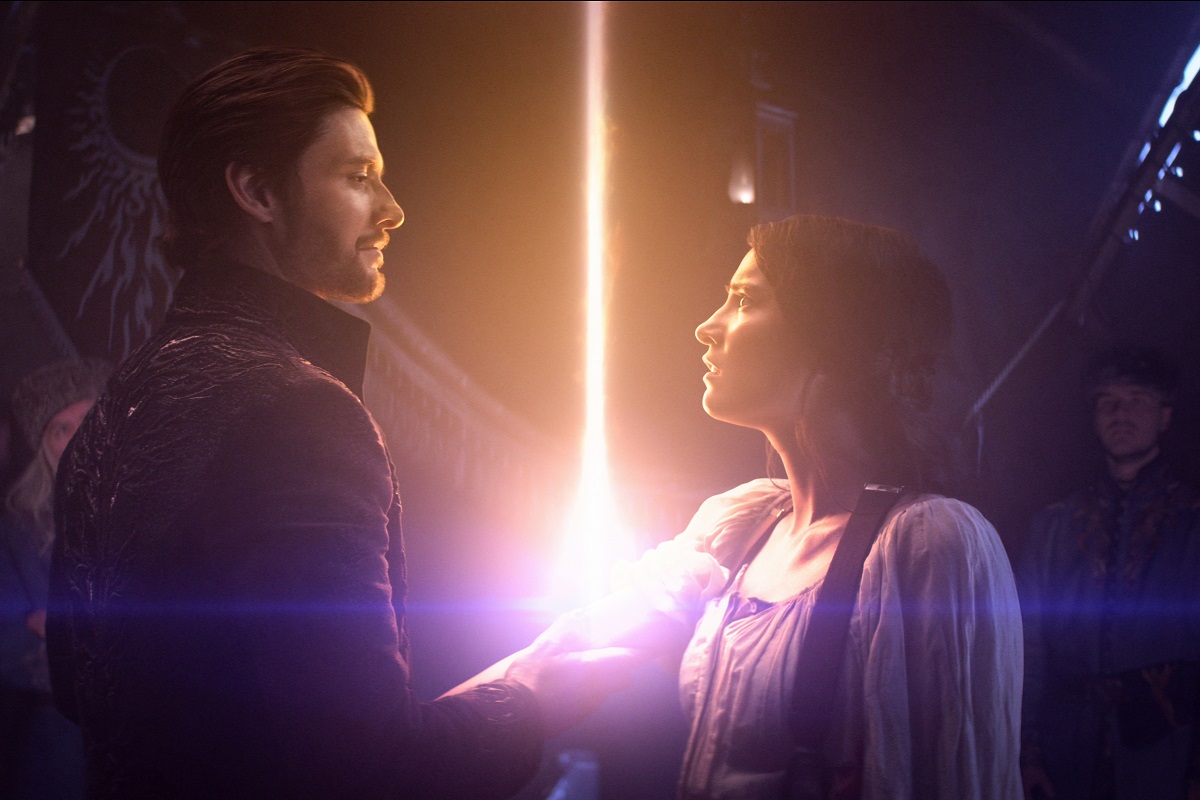For a while in the post-“Twilight,” post-“The Hunger Games” days, YA adaptations were a dime a dozen. Too many novels followed a generic “Superpowers revealed, true selves explored” template, with female protagonists often mired in love triangles that obfuscated their own character development. Plots were simultaneously overly complicated and fairly predictable, and the dystopia setting was particularly worn out. As cinematic or TV adaptations, franchises either fizzled out (“Divergent,” “The Mortal Instruments”) or never got off the ground (“Beautiful Creatures,” “I Am Number Four”). All of this is to say that the YA sphere has a certain amount of baggage, and—like all other genres—certain conventions and idiosyncrasies.
To expect anything different from Netflix’s “Shadow and Bone” would be an exercise in futility. There is a hero’s journey centered on self-confidence, and unspoken romantic feelings flying all which ways, and a nebulous evil that is destructive, sure, but also really about self-hate and fear. These elements aren’t what make “Shadow and Bone” unique; they’re clichés. Rather, Eric Heisserer’s adaptation transcends this familiarity thanks to the commitment of a pitch-perfect cast, well-stylized fight sequences, and intentional character development that makes these relationships feel nuanced and history-laden. “Shadow and Bone” doesn’t rely on surprise, but thrives on deliberation—flashbacks, breadcrumbs, and allusions that help support this dense world.

And to be true, it’s often too dense. Viewers of the show who don’t have prior knowledge of its source material, Leigh Bardugo’s popular Grishaverse series, might feel overwhelmed by the many locations, the flowery vernacular, and the various cultures. There are so many feuds! So many different types of magic, and so many different terms for the people who wield it! The main character is a cartographer, and seeing a map of this land consistently onscreen might have actually helped in piecing together all the interwoven details that “Shadow and Bone” just whizzes through! There is a tedious “Isn’t this all so different?” quality to how characters speak in “Shadow and Bone” that again, like so much of YA, is bogged down by world-building exposition. A dangerous location called the Fold, a villain called the Black Heretic, a hero called the Sun Summoner—dialogue all delivered by actors with British accents, although this entire world is influenced by the Russian culture and language. (An approach that has received criticism from readers regarding Bardugo’s consistently incorrect Russian grammar.) Premiere episode “A Searing Burst of Light” is a bit of a slog, and “Shadow and Bone” adds in new story elements in every ensuing hour in an approach that demands the same level of attention as “Game of Thrones.”
And yet: “Shadow and Bone” also knows when to rear back, and that restraint is one of its strongest assets, lessening the egregiousness of various narrative clichés. It avoids Netflix bloat with an eight-episode first season, rather than an unnecessary expansion to 10 or 13 episodes. No installment feels like filler; no episode feels padded. There is an open-door ending here, of course, but no cliffhanger so egregious that you’ll be irritated by its existence. In terms of romance, more characters don’t kiss than do, which could (understandably) irritate shippers but also benefits these relationships by leaving them room to grow. On a grand scale, and excluding the series’ fine ensemble, that final point is perhaps the best thing about “Shadow and Bone.” It establishes a universe, presents us with the (at times overly) detailed stakes, and steadily sketches the characters whose motivations will push them up against each other in questions of faith, power, destiny, and love—all while leaving space for expansion and elaboration. It sounds easy, but that aforementioned graveyard of YA adaptations proves that it’s harder than it seems, and “Shadow and Bone” pulls off the balance better than most.

“Shadow and Bone” is set in a world that is torn apart by magic. For years, a dangerous, barren location called the Fold—totally dark and dead inside, except for the winged, gargoyle-like monsters that hunt whoever attempts to pass through it—has divided the kingdom of Ravka. On one side of East Ravka, which only has access to the sea through the Fold; on the other side is West Ravka, which wants sovereignty. There are two armies who have sworn loyalty to the king of Ravka: the First Army, which includes soldiers and warriors, and the Second Army, exclusively populated by the Grisha, or individuals who can wield magic. In the First Army serve Alina Starkov (Jessie Mei Li), a cartographer, and her best friend, Malyen Oretsev (Archie Renaux), a tracker and fighter. Inseparable since they grew up in the same orphanage, there is clearly something between Alina and Mal—an exceptionally deep bond that always results in them finding their way back to each other. Is that the connection that activates Alina’s magical power during her first trip through the Fold?
Whatever the cause of it, once Alina is revealed as a Grisha, her whole world changes. Sworn to defend the whims of the kingdom, Grisha come in many forms. Heartrenders can tell whether someone is lying or telling the truth depending on their heart rate, while Healers are, well, self-explanatory. Inferni can control fire, Squallers can control air, and Durasts can manipulate materials. They all live in the Little Palace in the West Ravkan capital city Os Alta, and they all serve the formidable, foreboding General Kirigan (Ben Barnes), who can control darkness, and they are mostly hated and resented by the common people. The Grisha are rewarded for their innate abilities by the Ravkan elite, and dreaded, hunted, and killed by others in this world, such as the Fjerdan. And when Alina is revealed to have a unique, nearly mythical, power, the law of the land dictates that she must leave Mal behind and go with the General to the Little Palace for training.
That revelation, and the literal and figurative journey that Alina takes afterward, makes up the bulk of the primary “Shadow and Bone” plot. The other main plot exists in reaction to Alina’s: Crime prodigy Kaz Brekker (Freddy Carter) wins a bid to kidnap Alina for an impressive payout, and enlists two members of his gang to help: sharpshooter Jesper (Kit Young) and spy Inej (Amita Suman). They’ll have to travel through the Fold, sneak into the Little Palace, come away with Alina, and somehow sneak back across the Fold to deliver her to their employer. It’s a heist that could get them killed at any moment, but “Shadow and Bone” avoids going too grim-dark thanks to the underlying hope of its characters, and the strength of their performers.

As Alina, Mei Li is tasked with grounding this entire premise, and she does a solid job balancing the myriad emotions associated with her character’s transformation. When we meet Alina, she is used to otherness because of her biracial heritage, and has grown slightly hardened as a result of the slurs and mocking she’s received since childhood. But she’s still a young woman, and her easy comfort with Mal, her terror of the Fold, and her desire to prove herself are all relatable qualities. Mei Li demarcates Alina before the Little Place and after it with a different fluidity to her physicality and a flintiness to her expressions, while her fierce loyalty to Mal remains untouched. Barnes is another standout, bringing dark charisma and roguish sensuality to the General’s Welcome to the Black Parade aesthetic; he also delivers some of the season’s most satisfying line readings, such as the stank he puts on “you and your … crew” when addressing a foe during a torture session. And the scenes with the Crows, who as antiheroes don’t have to be as purely chaste as Alina or Mal, tip-toe the series out of PG-13 territory: Inej’s skill with knives but uneasy relationship with her capability for violence is handled thoughtfully by Suman, while Carter and Young have a fun time with the conniving greed and amused sarcasm of their respective characters.
“Shadow and Bone” is, admittedly, a lot, and some pieces don’t always work. A tangential subplot involving waffles (yes, the breakfast food) is bizarrely out of place; a meet-cute that spins out of a witch-hunting plot is ill-advised; and some elements too obviously taken from Russian history, such as a Rasputin-like character, feel inauthentic. But the performances are steady, the episodes well-paced, and the dialogue, outside of all the world-building jargon, is sharply composed. Altogether, “Shadow and Bone” maintains a sense of interior place for the characters dealing with plot developments as varied as mean girl dynamics, geopolitical posturing, and body horror, and the well-balanced nature of this first season makes for a promising introduction into this franchise’s fantastical universe.
First season screened for review. All eight episodes of “Shadow and Bone” are available on Netflix today.












